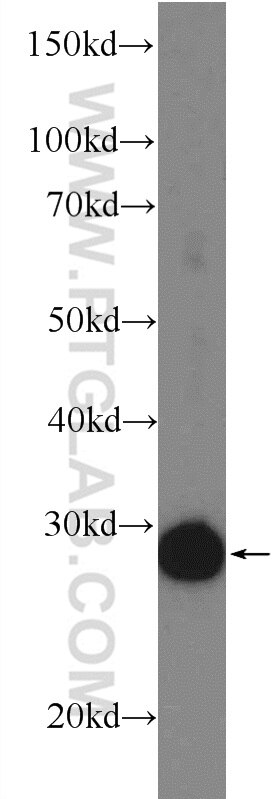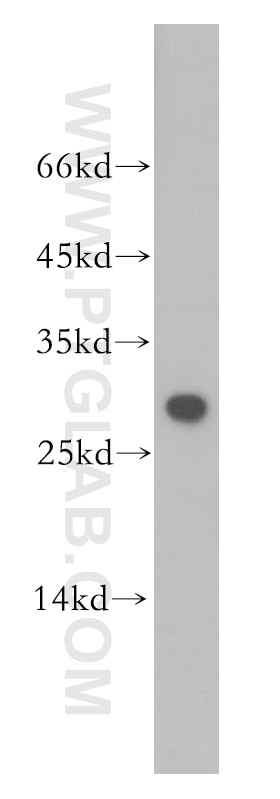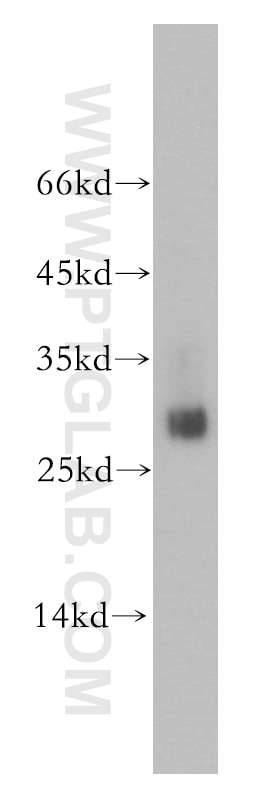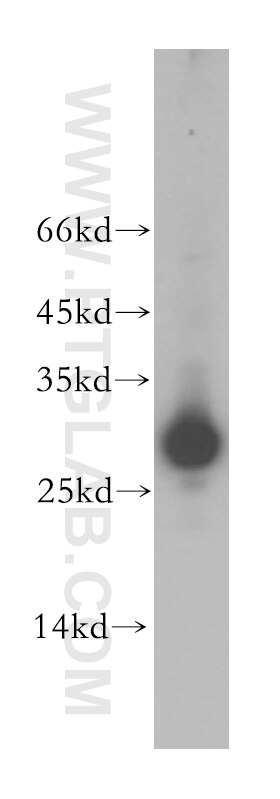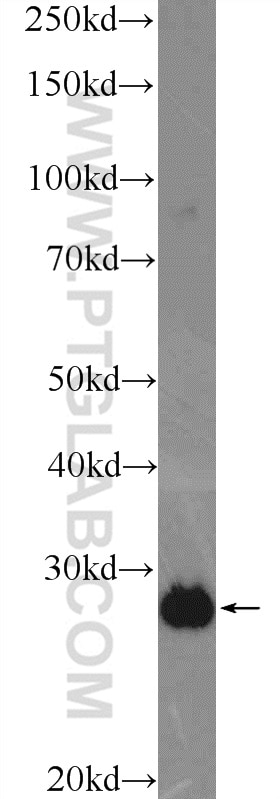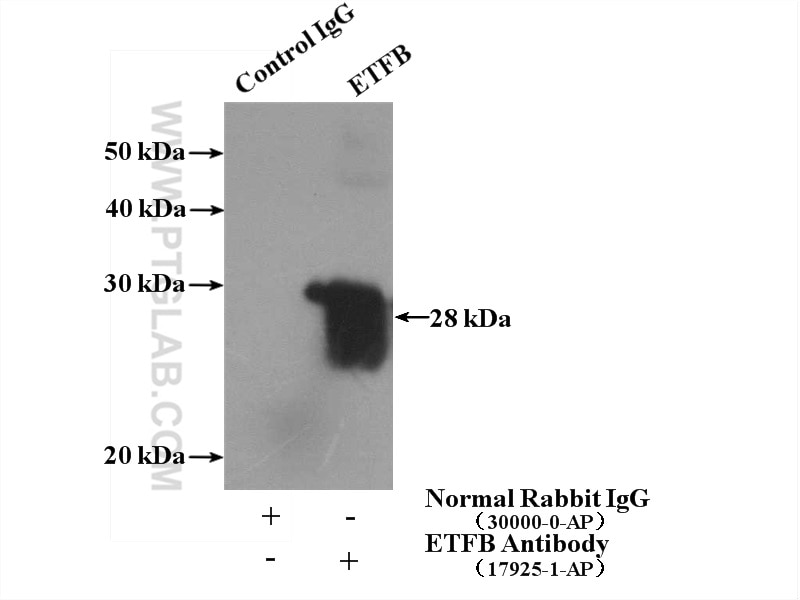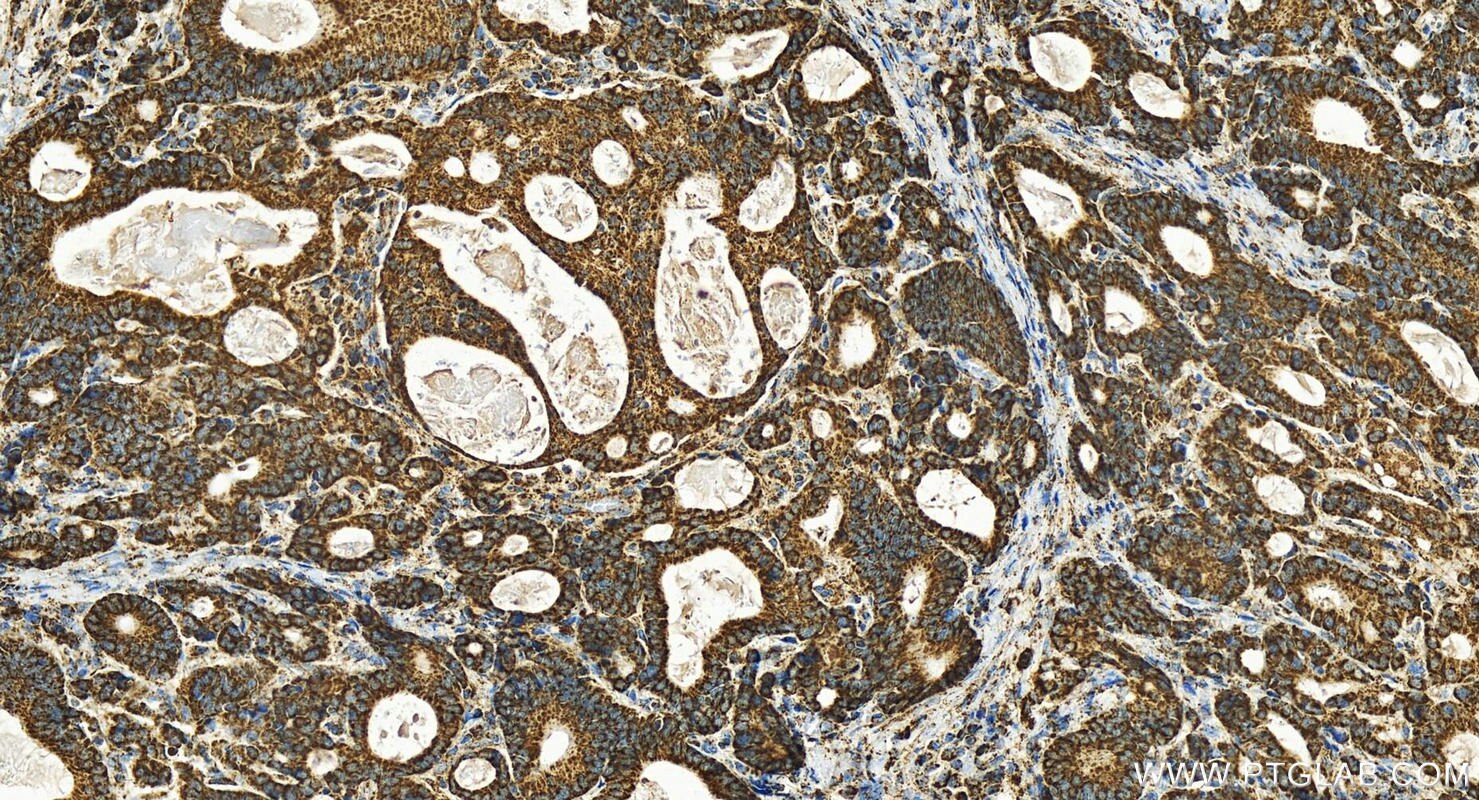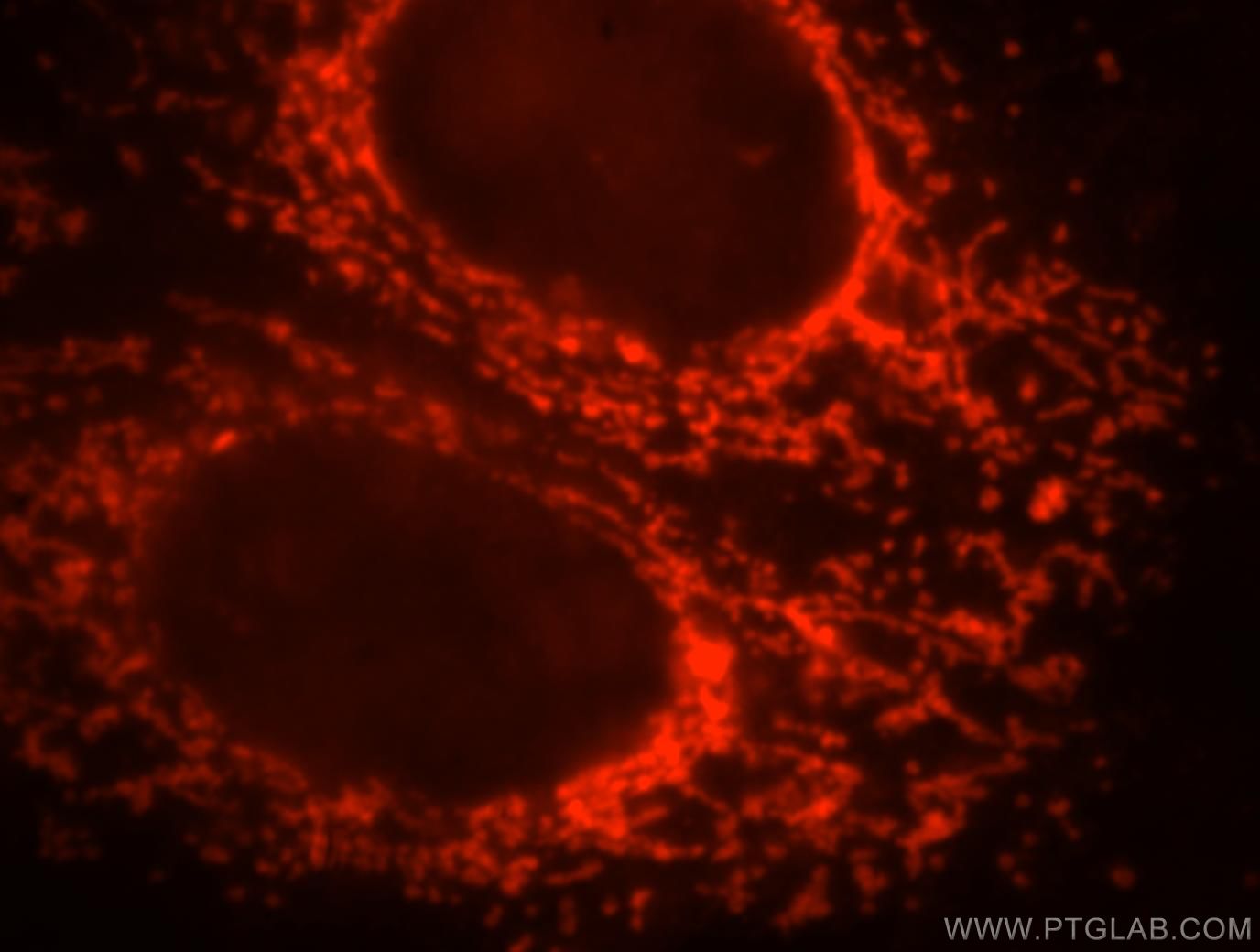Validation Data Gallery
Tested Applications
| Positive WB detected in | mouse skeletal muscle tissue, human heart tissue, mouse brain tissue, rat brain tissue |
| Positive IP detected in | mouse brain tissue |
| Positive IHC detected in | human stomach cancer tissue Note: suggested antigen retrieval with TE buffer pH 9.0; (*) Alternatively, antigen retrieval may be performed with citrate buffer pH 6.0 |
| Positive IF/ICC detected in | HepG2 cells |
Recommended dilution
| Application | Dilution |
|---|---|
| Western Blot (WB) | WB : 1:500-1:2000 |
| Immunoprecipitation (IP) | IP : 0.5-4.0 ug for 1.0-3.0 mg of total protein lysate |
| Immunohistochemistry (IHC) | IHC : 1:200-1:800 |
| Immunofluorescence (IF)/ICC | IF/ICC : 1:10-1:100 |
| It is recommended that this reagent should be titrated in each testing system to obtain optimal results. | |
| Sample-dependent, Check data in validation data gallery. | |
Published Applications
| WB | See 6 publications below |
| IF | See 2 publications below |
Product Information
17925-1-AP targets ETFB in WB, IHC, IF/ICC, IP, ELISA applications and shows reactivity with human, mouse, rat samples.
| Tested Reactivity | human, mouse, rat |
| Cited Reactivity | human, mouse |
| Host / Isotype | Rabbit / IgG |
| Class | Polyclonal |
| Type | Antibody |
| Immunogen | ETFB fusion protein Ag12344 相同性解析による交差性が予測される生物種 |
| Full Name | electron-transfer-flavoprotein, beta polypeptide |
| Calculated molecular weight | 255 aa, 28 kDa |
| Observed molecular weight | 28 kDa |
| GenBank accession number | BC093961 |
| Gene Symbol | ETFB |
| Gene ID (NCBI) | 2109 |
| RRID | AB_2100560 |
| Conjugate | Unconjugated |
| Form | Liquid |
| Purification Method | Antigen affinity purification |
| UNIPROT ID | P38117 |
| Storage Buffer | PBS with 0.02% sodium azide and 50% glycerol , pH 7.3 |
| Storage Conditions | Store at -20°C. Stable for one year after shipment. Aliquoting is unnecessary for -20oC storage. |
Background Information
Electron transfer flavoprotein (ETF) exists in the mitochondrial matrix as a heterodimer of 30 kDa alpha subunits (ETFA)and 28 kDa beta subunits (ETFB) and contains 1 flavin adenine dinucleotide (FAD) and 1 adenosine 5-prime monophosphate (AMP) per heterodimer.It serves as a specific electron acceptor for several dehydrogenases, including five acyl-CoA dehydrogenases, glutaryl-CoA and sarcosine dehydrogenase.ETFB has 2 isoforms produced by alternative splicing. Defects in ETFB are the cause of glutaric aciduria type 2B (GA2B).
Protocols
| Product Specific Protocols | |
|---|---|
| WB protocol for ETFB antibody 17925-1-AP | Download protocol |
| IHC protocol for ETFB antibody 17925-1-AP | Download protocol |
| IF protocol for ETFB antibody 17925-1-AP | Download protocol |
| IP protocol for ETFB antibody 17925-1-AP | Download protocol |
| Standard Protocols | |
|---|---|
| Click here to view our Standard Protocols |
Publications
| Species | Application | Title |
|---|---|---|
Mol Cell Filamentous GLS1 promotes ROS-induced apoptosis upon glutamine deprivation via insufficient asparagine synthesis. | ||
Mol Cell Biol A mutation in the FAD-dependent oxidoreductase FOXRED1 results in cell-type specific assembly defects in oxidative phosphorylation complexes I and II. | ||
J Biol Chem Human METTL20 Methylates Lysine Residues Adjacent to the Recognition Loop of the Electron Transfer Flavoprotein in Mitochondria. | ||
J Cell Sci Mitochondrial maintenance under oxidative stress depends on mitochondrial but not nuclear α isoform of OGG1. | ||
J Cell Mol Med New protein-protein interactions of mitochondrial connexin 43 in mouse heart. |
